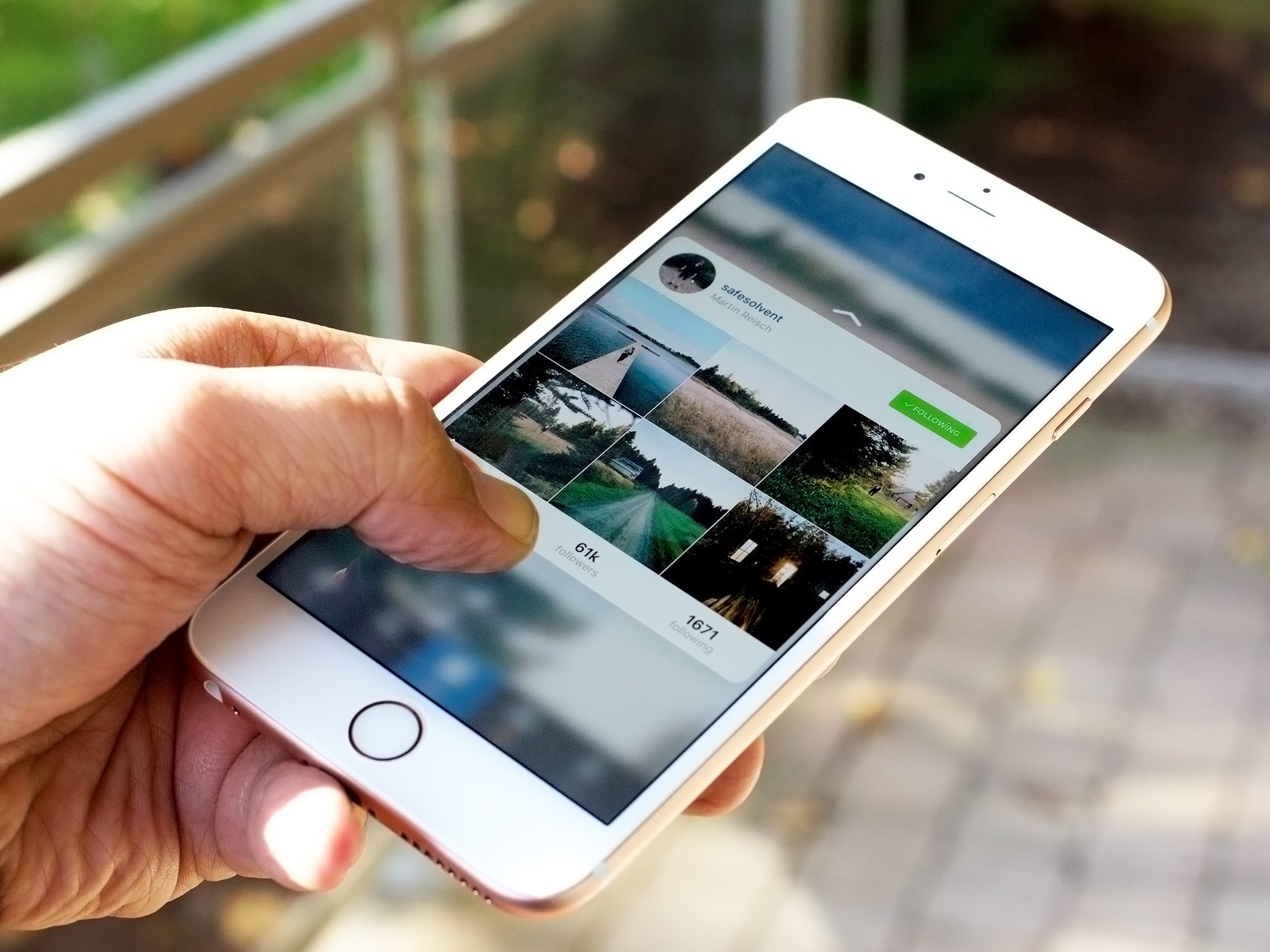3D Touch is a niche I can't live without

Recently, there's been a lot of talk amongst Apple fans about 3D Touch — and the lack thereof on the new iPhone SE. "Does anyone even use 3D Touch?"
Hi. Me!
Yes, 3D Touch began as a gimmick, and peeking and popping are the scapegoats of that gimmick. Do you need to peek at a mail message you're going to open anyway? Probably not.
And without question, it's a feature that should deprecate to a long press on older phones. The fact that both long press and 3D Touch exist in the iPhone ecosystem is head-splitting, and incredibly frustrating for apps (or home screens) that offer both options.
But I can't imagine buying another iPhone without 3D Touch.
Forget peek and pop — it's all about the cursor
Since the iPhone 3G, there's been a pretty simple way to select text and move your cursor: You tap anywhere in your text, and the cursor moves appropriately. If your thumbs are too stubby, as mine are, to get a precise cursor location, you can long press to get a magnifying glass and move your cursor accordingly.
It's not a bad way of selecting text. But as a writer, it makes typing out anything extensive on the iPhone uninteresting and slow.
iMore offers spot-on advice and guidance from our team of experts, with decades of Apple device experience to lean on. Learn more with iMore!
3D Touch actions rebuild cursor and text selection from the ground up. It steals the iPad's two-finger gesture that turns the keyboard into a glorified trackpad and implements it, instead, with a single press. Want to move your cursor with an iPhone 6s or 6s Plus? Press firmly on your keyboard and you can quickly move your cursor at lightning speed across the page. It even scrolls, so you can adjust text anywhere in your document, tweet, or email message.
Lighten up on that touch then press deeper, and you can access text selection, too. If you start at the beginning or end of a sentence, you can drag accordingly; hover over a word, and that word will automatically highlight.
It completely changes my workflow for text on the iPhone in a meaningful way. I wrote this piece on my 6s — not because I greatly prefer this keyboard to the physical one on my iPad or Mac, but because it's comfortable (and available in a pinch). That's largely thanks to 3D Touch. It hasn't completely replaced the older text selection gesture, but it's become a huge supplement to writing on the iPhone.
This gesture isn't perfect: One thing the 3D Touch cursor won't do is bring up the contextual pop-over menu, which can be annoying if I'm trying to paste a link inside Markdown brackets. Selecting text took me a few days to truly get how to press, though iMore's editor-in-chief Rene Ritchie explaining it like "taking your foot off the gas, then reapplying" helped a lot.
But even with little nitpicks, this feature is invaluable to me. It barely got screen time in 3D Touch's initial demonstration, but it's become one of my most-used shortcuts.
Peek, pop, and switch
I agree with Six Colors's Jason Snell: Peek and pop are silly.
I thought I'd love peek for URLs in messages or emails, but the inability to scroll through the peeked website means you often only load the website's banner and maybe a hero image; most sites push the headline down on mobile to where a peek makes it unreadable.
That said, there is one thing that makes peek worth it, for me: the contextual menu. Slide up on a peek, and you get three common menu actions for the item you're looking at. For a website, that's opening it in a new tab, copying the URL, or saving it automatically to a reading list. For a date, you can show that information in Calendar, copy the information, or create an event right from the app you're in.
I use the contextual menu constantly to add links to my Reading List and create calendar events on my phone, and I find it a really nice shortcut. But if you don't take a few days to get it into your workflow and use it, you're not going to find value in it.
The same goes for the 3D Touch multitasking gesture: You can switch between apps by pressing firmly on the left side of your iPhone display, but most of us are so trained to use the Home button double-press, we never even think about it.
We've been using the Home button shortcut since iOS 4, so when you first attempt to get comfortable with the 3D Touch shortcut, it's going to feel slower than the traditional double-press. But once you get used to it, I've found it to be much quicker long-term.
For one, if you use your phone with your left hand (as I do), your left thumb is already close to the bezel and triggering the shortcut. This is especially handy (no pun intended) when you're using a phone like the 6s Plus and don't want to rearrange your grip just to multitask.
I also wonder if this isn't training for the future: There have been rumors of Home button-less iPhone models for years, now, and if that prediction does at last come to pass, we're going to need a quick way to multitask. A left-bezel shortcut could be the way to do it.
Go where the users are
By its very nature, 3D Touch doesn't really bring anything new to the iOS table: It duplicates system functionality as shortcuts — and currently does so sporadically, not offering quick options or peeks for every app. In doing so, users really have no reason to use it if they like their current workflow. "I can already select text. I can already multitask with the Home button. I can already get to Low Power mode if I just tap a few more menus."
I may love 3D Touch because I'm a shortcut-obsessed freak who forces herself to learn new things to speed up her workflow. But that's not your average user: For them to enjoy 3D Touch, there needs to be at least one gesture that's essential to their daily iOS navigation. Without one, they won't get comfortable with the movement and explore the others.
If Apple's going to stay on the 3D Touch train — and I do hope it is — the company needs to give its users a must-use gesture. The Apple Watch does this perfectly: You use a firm press to change your watch face. There are other Force Touch gestures that are shortcuts in watchOS, but that one is front, center, and vital to the Watch's operation.
It's of course, hard to do this without offering the same action to users on older iPhone or iPad models. But that's a great excuse to unify long press and 3D Touch: People are already comfortable with long pressing to edit apps or get contextual information. Unifying the gestures in iOS 10 would open Apple up to some big experimentation with how pressure and timing-based touches can be central to the iOS ecosystem.
Not a passing fad
I've found my daily reasons to use 3D Touch, and I'm so happy I did: They make my workflow quicker, more comfortable, and enjoyable on an iPhone. But I understand if you're not on the 3D Touch train yet: Apple has some work to do if it wants to make it truly appealing to the average user.
While the company is heads down trying to figure that out, however, we don't need to ring 3D Touch's death knell. It's not on the SE for hardware and cost reasons. And hey, if Apple does decide to unify the long press with 3D Touch, the iPhone SE will be a great testing device for that.
Until we see what Apple has in store for future models, 3D Touch remains a niche feature with some really great uses if you take the time to learn them. I'm glad I did, and I won't buy another 3D Touch-less phone if I can help it.
Serenity was formerly the Managing Editor at iMore, and now works for Apple. She's been talking, writing about, and tinkering with Apple products since she was old enough to double-click. In her spare time, she sketches, sings, and in her secret superhero life, plays roller derby. Follow her on Twitter @settern.

